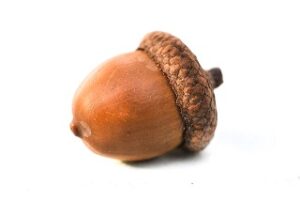This is RPG-ology #32: Doing Something, for July 2020.
Although this is actually about a gaming referee technique, I’m starting with an example from a book, my novel Verse Three, Chapter One, freely accessible on the web. It also begins with magic items, but moves beyond that to objects in other settings and genres.

As the story unfolded I needed to have one character, effectively a support character or non-player character, give one of my main characters a specific small magic object in a magically-shielded bag, but had to do it in a way that would not make it seem obvious that this was my intention. The easy way to do that was to put several other small magical objects in the same bag, so that the immediately important one would be just one of several. That’s one trick you should note. Somewhere in the Harry Potter books, probably in The Half-Blood Prince, Harry enters the Room of Requirement in its guise as the place to hide things so no one can find them, and Rowling mentions several objects as examples of the mass collection of junk. One of them is a tiara, I think sitting incongruously on the head of a bust of a man, if memory serves. Then in the final book, The Deathly Hallows, we come to a place where he has to find the Diadem of Ravenclaw, and neither he nor we know where it is–but in fact he and we have seen it already, and just didn’t realize it was important because it was hiding amidst all the other junk. I had already done the same thing with my important object, dropping it into a bag with four other objects. My five objects were a paper clip, a coin, a six-sided die, a cat’s eye marble, and an acorn.
I’m not going to tell you which one was important, or what they did; you can get that by reading the books, and I won’t spoil it here. What I will tell you is that when I put those five objects in that pouch I knew that they were all magic, created by the somewhat loony young sorceress who gave them who enjoyed making magic items from ordinary objects–but I only knew what one of them did, the one that mattered in the short term. However, I had learned something from the most creative referee I ever knew, captured in the phrase I can do something with that.
This particular referee ran a high-magic D&D-style game, and had a penchant for turning seemingly ordinary objects into bizarre magic items. Any particular “treasure horde” was apt to contain some number of seemingly innocuous objects with a rather high chance that they had at some point picked up some kind of magic. Although these objects often seemed random, it was that phrase that made them part of the game: I can do something with that.
And so as I selected each of the objects to fill my bag, I had no idea what they did, but I knew I could use them, create potentially interesting minor magic items with them, if I gave it a bit of thought. Of course, I had to give it thought, because my character was going to put effort into figuring out what they were, and so before long I had figured out what three of the four were, leaving me only one object that was a mystery, not only to my character and my readers but even to me. It remained so until the book was published and I was well into writing the next, when abruptly I realized that this one seemingly unimportant object could be a critical piece in one of the puzzles I had set for myself in writing a major story arc spanning three books. It was exactly what I needed. I did something with it.
The applications for fantasy games and fantasy books are obvious. You can, and sometimes should, throw odd objects into the story to catch the attention of the audience, but you don’t have to know what they are or what they do when they first appear, only that you can use them in some way that will be fun or interesting or dangerous or in some other way exciting. You can figure out what it is, what it does, later. You can obviously also do this with alien technology or other artifacts in science fiction settings. Yet I think it can go beyond that.
Documents are wonderful in this regard. If the characters decide to search a desk, they might well find letters, or contracts, or deeds, or some similar documents one of which is a major clue to what is happening. Book shelves are obvious places to hide books, that is, one important book among a collection of others. You don’t have to know why the information is important when you put it there; you only have to figure out how it helps the story when the characters start examining it.
Other possible mysterious objects include unlabeled bottles on spice racks or in medicine cabinets, the contents of a jewelry box or wardrobe drawer, knick-knacks on a shelf. In every case, put odd objects in the story, and don’t worry about what they are, do, or mean until the characters latch onto them.
One advantage of this is that if the players miss some object you put in the story, you didn’t spend hours working out what something is that will never be used. Meanwhile, if they do latch on to something you dropped into the world incidentally, you can backwrite significance to it when it will help.
So at least once in a while when the characters search, let them find something that intrigues them. You don’t have to know what it is or does when you put it there, as long as you can do something with that.
Previous article: Screen Wrap.
Next article: Flirting.
